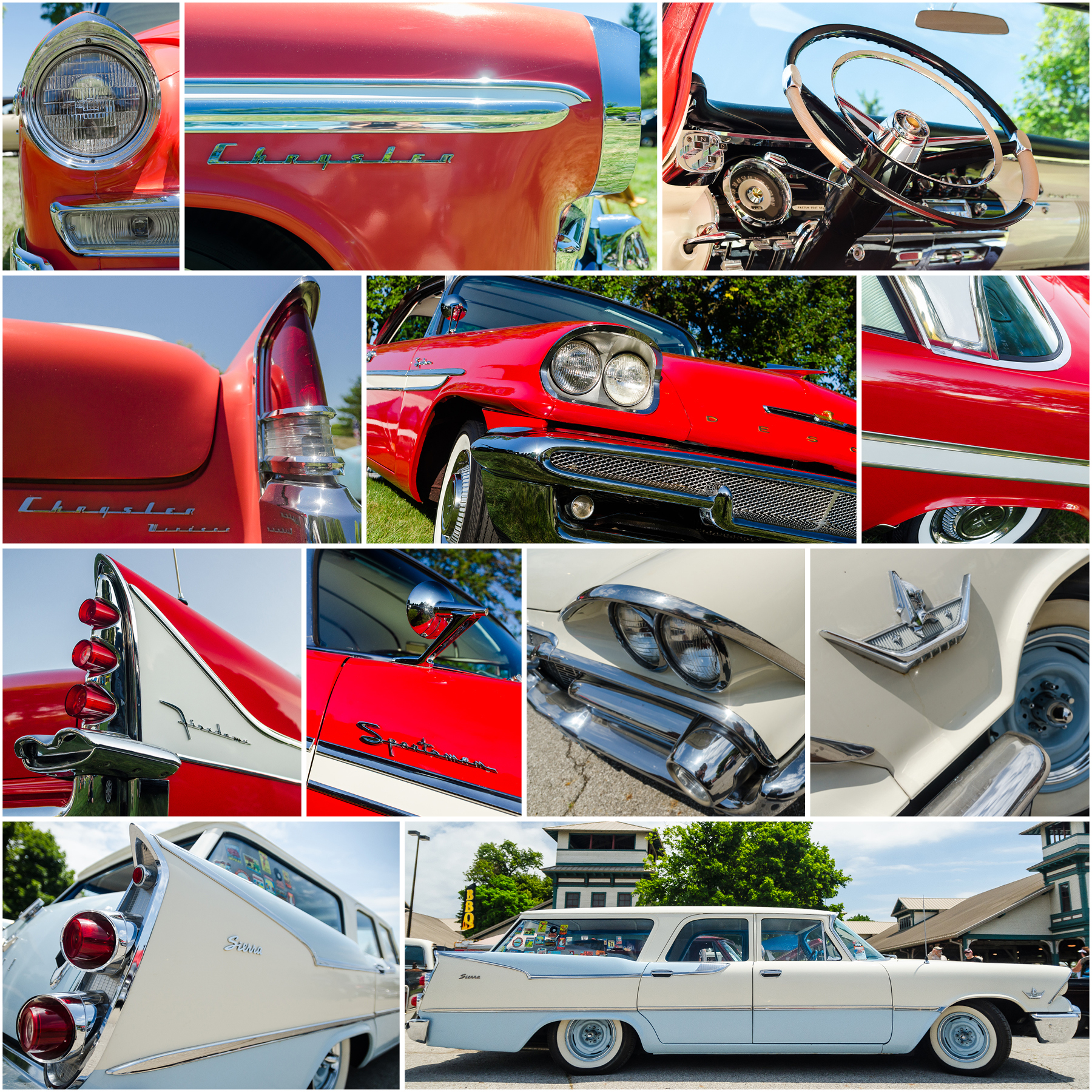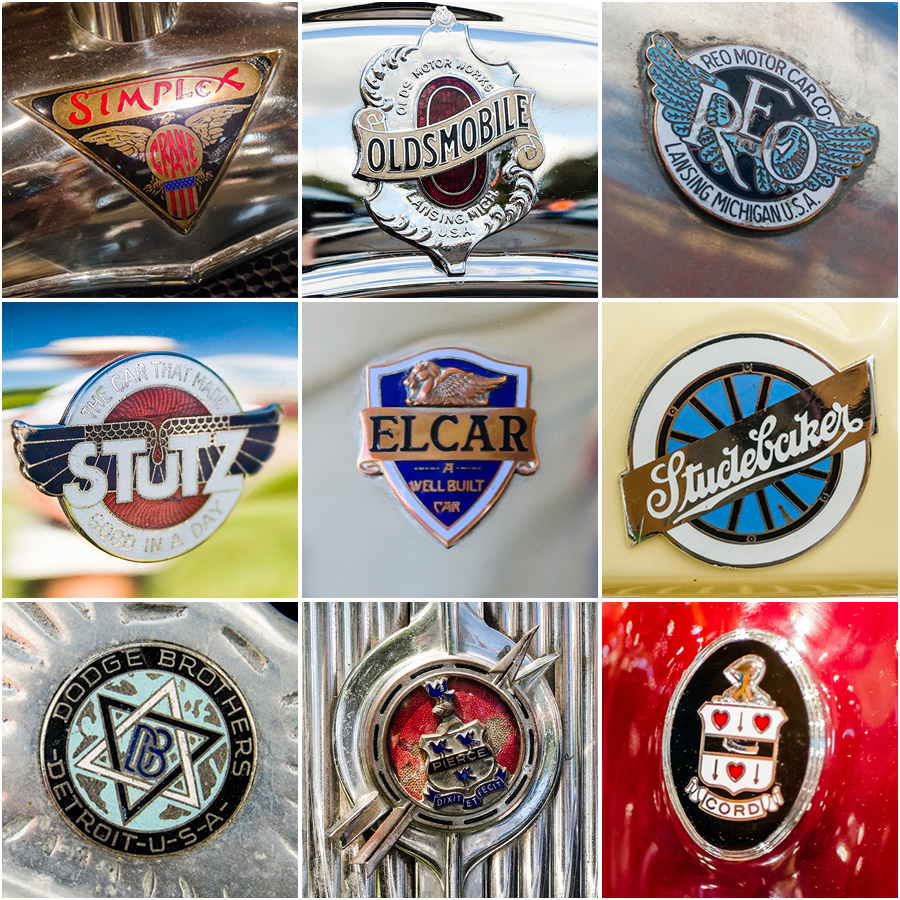This past weekend was my Christmas of car shows weekend. Central Ohio hosted both the Goodguys PPG Nationals and the Arthritis Foundation Classic Car Show. I split my time between the two shows over three days and a crazy number of steps according to my smart watch. I my time seeing literally thousands of vintage and custom cars, three that stood out to me had one thing in common: they were Chrysler Corporation products designed under the direction of Virgil Exner during the 1950s. Do I have a “type” when it comes to ’50s Detroit steel? Apparently, I do.
The 1956 Chrysler Windsor Newport was an update of the revolutionary 1955 model that started Exner’s “forward look.” This Windsor trim level was not the top-of-the-line, but it was far from basic. The long, substantial lines somehow avoid looking heavy, and the two-tone white and salmon paint make for a great combo.
The 1958 DeSoto Firedome Sportsman was at the height of the late ’50s jet age excess and this example stopped me in my tracks. The two-tone white and red paint helped, but those fins! People often talk about the 1959 Cadillac fins, but the fins on the ’57 and ’58 DeSoto are every bit as impressive. And the jet-exhaust taillights! It amazes me that something like that could come out of the design department of a large corporation.
Finally, the 1959 Dodge Sierra station wagon combines those jet-age influences with the practicality of a wagon. When I see cars like this, it makes me resent current crossovers even more. If something like this Dodge Sierra existed today, I’d have no issue driving a “practical” vehicle.
Interested in a print of one of my MoPar photos, or others? Visit my store and place an order.
Top row, left to right: 1956 Chrysler Windsor Newport headlight, Windsor fender detail, Windsor dashboard. Second row, left to right: Windsor decklid and tailfin, 1958 DeSoto Firedome Sportsman front and flank, Firedome roof and rear fender. Third row, left to right: Firedome tailfin, Firedome rearview mirror and badge, 1959 Dodge Sierra station wagon headlights, Sierra front fender badge. Bottom row, left to right: Sierra taillights and flank, Sierra profile.



